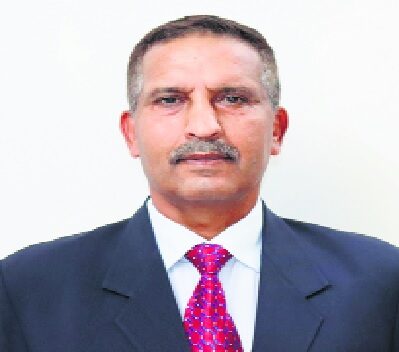Recalibrate strategy to protect railway network from sabotage
THE Central Government said on September 10 that 18 incidents of sabotage of railway infrastructure had occurred since August 1 this year; a total of 24 incidents have happened in the past two years. On September 8, an LPG cylinder was found on a railway track near Kanpur. A fortnight ago, Railway Minister Ashwini Vaishnaw had expressed concern over recent train derailments and said that a “disturbing trend is being seen”. As a result of this, the Railways and other agencies are investigating multiple attempts to derail trains. Terrorist involvement in the matter is also being looked into.
This spate of incidents to sabotage the railway network in India is not a new phenomenon. As per a press release of the Ministry of Railways, the Railways decided to undertake patrolling of tracks in the sections considered sabotage-prone, keeping in view the safety of passengers, in September 2003.
Why target the Railways? Over the years, the establishment has focused largely on the security of the aviation sector and so the surface transport infrastructure has not received due emphasis. Terrorists are known for their ability and desire to innovate, both in terms of technology and tactics so as to be a step ahead of the security agencies to successfully carry out attacks. The railway network has always been a favourable target of terrorists due to its expanse, the high number of people who utilise it, as well as the vital logistics services it provides to the nation. The Railways is also expanding and this will likely result in it becoming increasingly vulnerable to attacks. The disruptive potential of such attacks can be gauged from the targeting of France’s high-speed train lines that were targeted by ‘malicious’ acts, including arson and ‘coordinated sabotage’ to disrupt travel ahead of the opening ceremony of the Paris Olympics.
While fragmented efforts have been initiated to enhance the safety and security of passengers and goods, a harmonised, coordinated and collaborative response by all stakeholders is required to prevent such attacks and reduce the vulnerability of rail infrastructure. The plan should also include measures to enhance our capability to minimise the damage and restore services promptly whenever such attacks occur.
The first step is to understand the motives of the perpetrators. In Ajmer, Rajasthan, two cement blocks weighing 70 kg each were placed on the rail track. Despite hitting the cement blocks, the train was able to continue its journey without any damage. These are apparently attempts to derail trains with the aim of causing fatalities and destroying railway property. It seems that these attacks were carried out by rookies rather than by well-trained terrorists. These acts may have been executed by criminal elements; the terrorist-criminal nexus has existed since the advent of terrorism. More importantly, the execution of such attacks has been outsourced to criminals who are acting like overground workers of terrorist organisations. As time passes, they can enhance the survivability and relevance of the terrorists to create an atmosphere of lawlessness and insecurity. Therefore, it is imperative to classify these intentional attempts to derail passenger and goods trains as terrorist acts and not sabotage by criminal elements.
Secondly, while the train operations are under the control of the Ministry of Railways, the guarding of tracks and bridges against miscreant activity is the statutory responsibility of the state governments concerned. The Railways also has the Railway Protection Force and Government Railway Police under it. In such a situation, the Ministry of Home Affairs (MHA) has to step in to assume the role of coordinating and ‘de-conflicting’ roles of various agencies and stakeholders. The MHA should order a review of the security of railway infrastructure, risk and threat assessment to prioritise vulnerabilities and gaps in the security architecture to prevent and deter both physical and cyberattacks. These risk-based plans should be tailor-made for specific areas, including measures to enhance information-sharing, protection and leveraging technology to improve rail security.
The Railways will need to focus on training employees, improving technology, infrastructure and coordinating with law enforcement agencies, industry, state, local and community officials, emergency responders and Central agencies to foster collaboration and integrate resources for enhanced deterrence and response capabilities. Measures like surveillance through CCTV cameras, drone monitoring, patrolling and regular track inspections will have to be dovetailed in the plans to prevent such incidents. In high-threat areas, it would be advisable to have pilot engines clear the lines ahead of the passenger trains.
The Railways will also need to evolve a system of public participation in ensuring security of the infrastructure. For this, it could look at the US system developed in 2010, called the Nationwide Suspicious Activity Reporting Initiative throughout the entire rail system. This was a significant step toward enhancing the security of the national transportation infrastructure in partnership with federal, state and local law enforcement agencies to identify and report suspicious incidents or activity and share that information nationally so that it can be analysed in real time.
One of the critical challenges will be to implement security measures to safeguard our rail system from terror attacks without compromising the accessibility and efficiency of train travel. In fact, the MHA should go beyond the railways and progressively prepare and implement a national infrastructure and key assets protection plan to remain ahead of the terrorists before they target other sectors.









